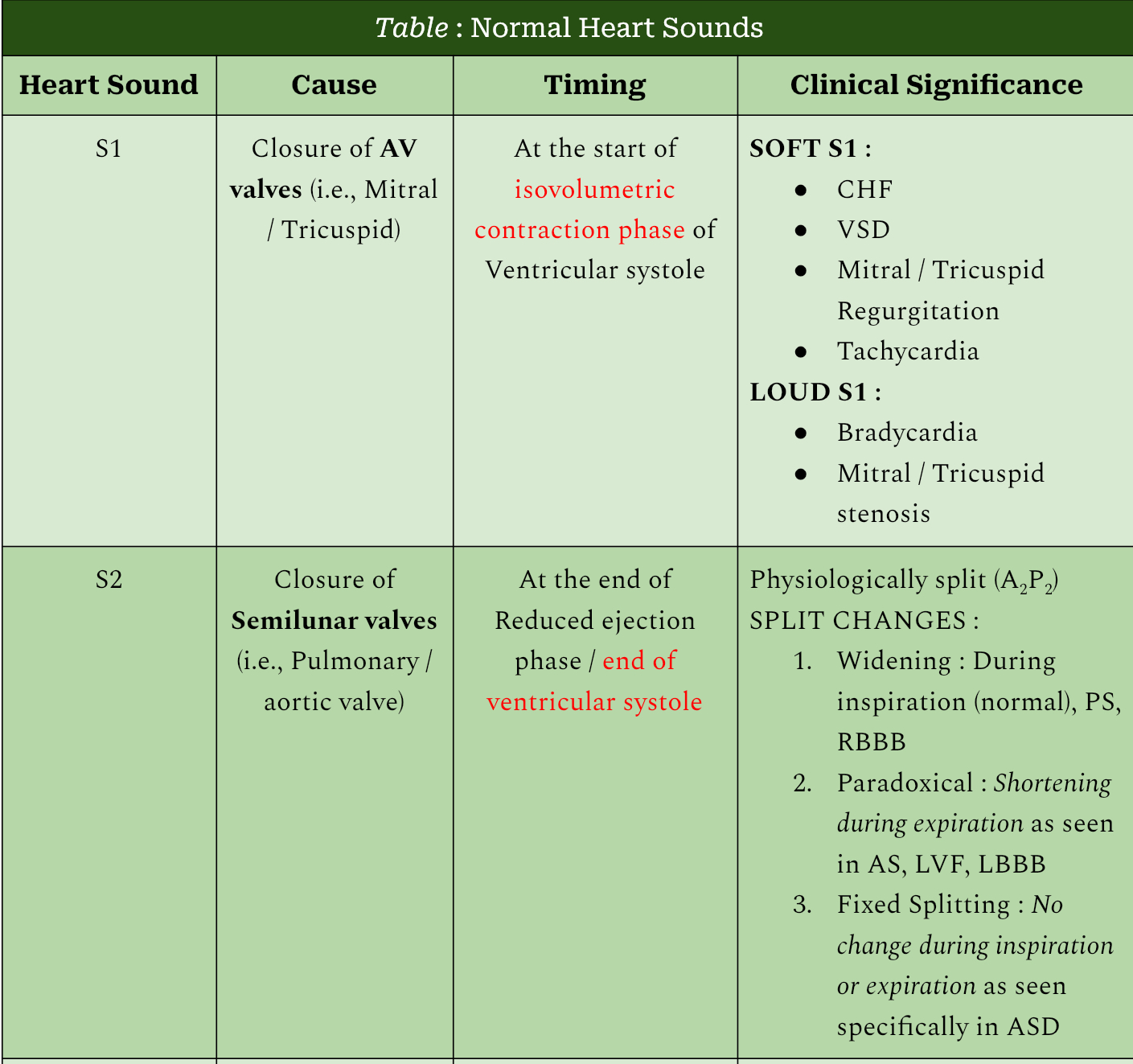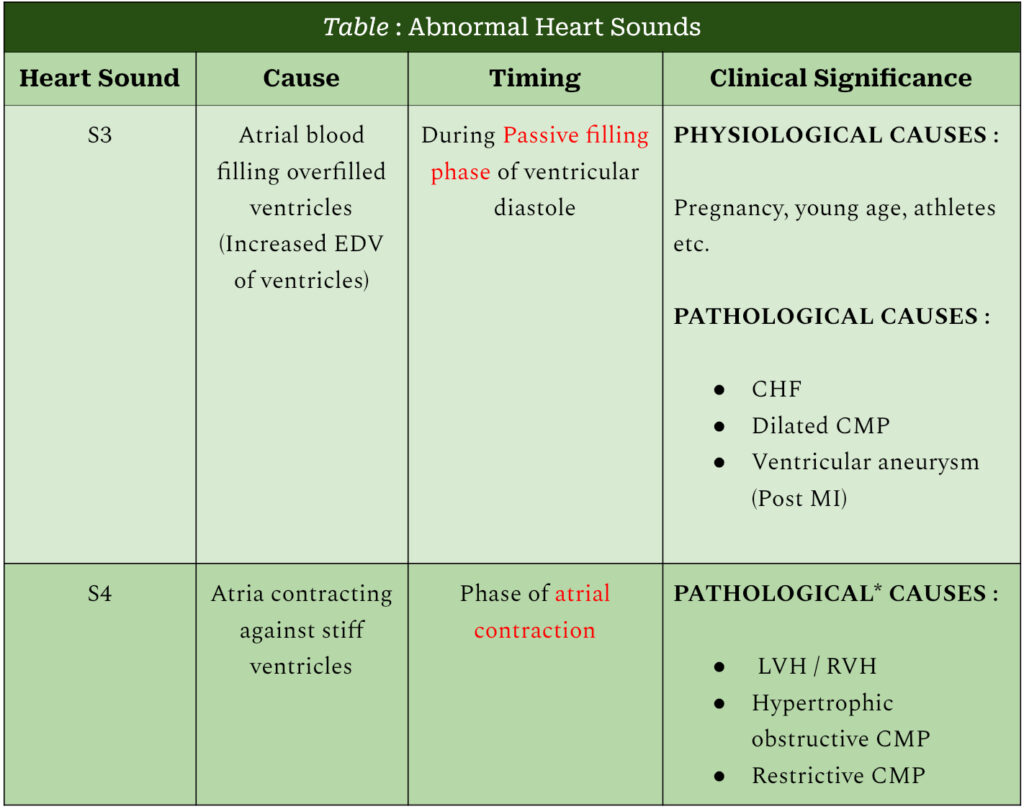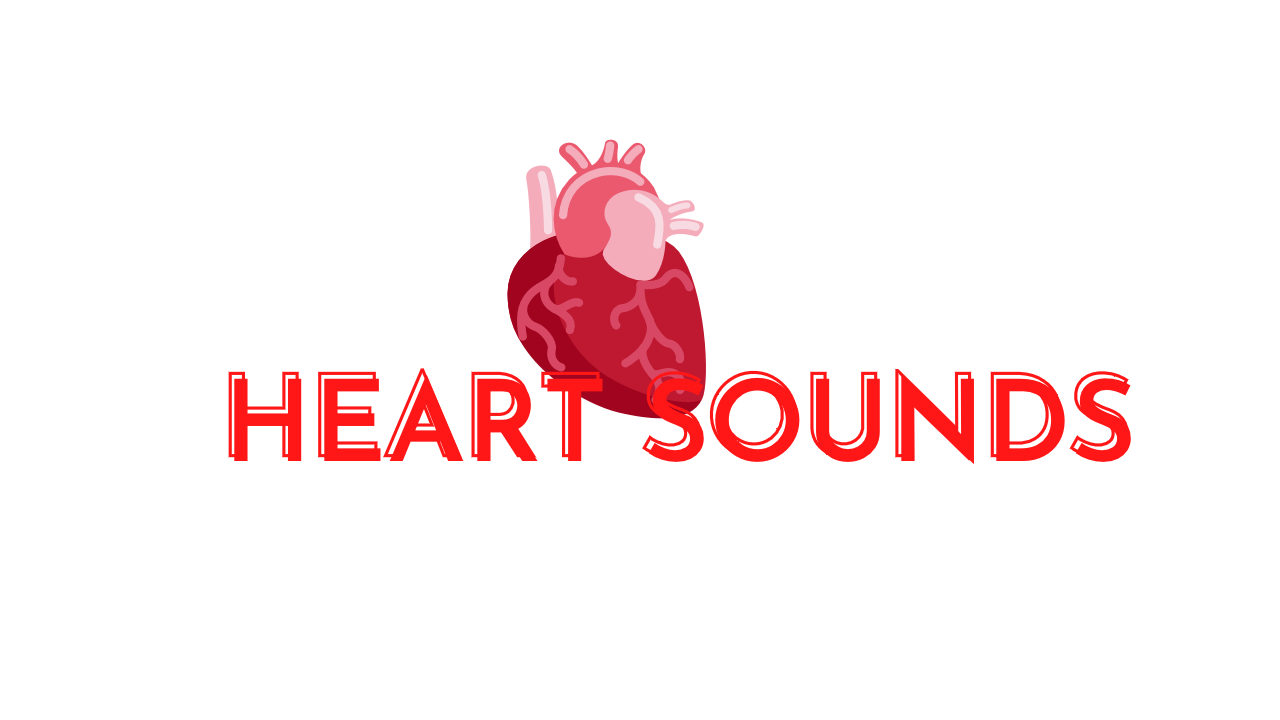“Heart sounds are simply the sounds that are generated during cardiac cycle by valvular events and flow of blood across it.”
IMPORTANCE OF HEART SOUNDS :
As heart sounds tell us about the normal functioning of the heart without any invasive procedure, they can be helpful to diagnose various clinical conditions of the heart on an office basis.
Before we had radiological diagnostic modalities, they used to be the sole source of diagnosis.
One more important use of auscultation of heart sounds is to assess the severity of given valvular disease (eg., Aortic and pulmonary stenosis).
TYPES OF HEART SOUNDS AND THEIR PRODUCTION:
S1 and S2 are the two main types of heart sounds (so called “normal / regular heart sounds”). The details of the normal heart sounds is given in aconcise manner in the below given table :

Apart from these, there can be other heart sounds which are usually an indicator of underlying pathology but can be normal as well. They are described in table below :

ADDITIONAL HEART SOUNDS :
Apart from above mentioned basic types of heart sounds, there are some additional ones that can be heard during auscultation sometimes and they are enumerated with description as below :
A. EJECTION CLICK :
Sound made by rapid flow of blood across the valve during rapid ejection phase.
It usually occurs in semilunar valves as ventricles have high pressures compared to atria. They are heard when end diastolic pressures in ventricles are high such as, increase in afterload (Aortic / Pulmonary stenosis).
B. OPENING SNAP :
It’s atrial version of ejection click.
When atrial pressures are high, mitral / tricuspid valves open with a snap which is called opening snap (OS).
Conditions where OS might be present are mitral / tricuspid stenosis. It is heard during the early diastole phase of the cardiac cycle.
C. MID-SYSTOLIC CLICK (NON-EJECTION CLICK) :
It is seen when ventricles have become sufficiently empty during the ejection phase and is specific for Mitral Valve Prolapse.
It has to be differentiated from ejection click, which is early in systole.
TRACING OF VARIOUS HEART SOUNDS DURING CARDIAC CYCLE :
Below is a diagram that gives an idea regarding timing of various heart sounds, normal and abnormal, during cardiac cycle :

IVC : Isovolumetric Contraction, EP : Ejection phase [Ventricular Systole]
IVR : Isovolumetric Relaxation, PFP : Passive Filling Phase, AC : Atrial Contraction [Ventricular Diastole]
EC : Ejection Click, MC : Mid-systolic Click, OS : Opening Snap,
With this, we finish the basics of heart sounds with their clinical significance and tracing on cardiac cycle.
It is infinitely better to transplant a heart than to bury it to be devoured by worms.
Christian barnard
REFERENCES :
- Hall, John E. Guyton and Hall Textbook of Medical Physiology. 13th ed., Elsevier, 2016.
- Le, Tao; Bhushan, Vikas; and Sochat, Matthew. First Aid for the USMLE Step 1 2021. New York: McGraw-Hill Education, 2021.
